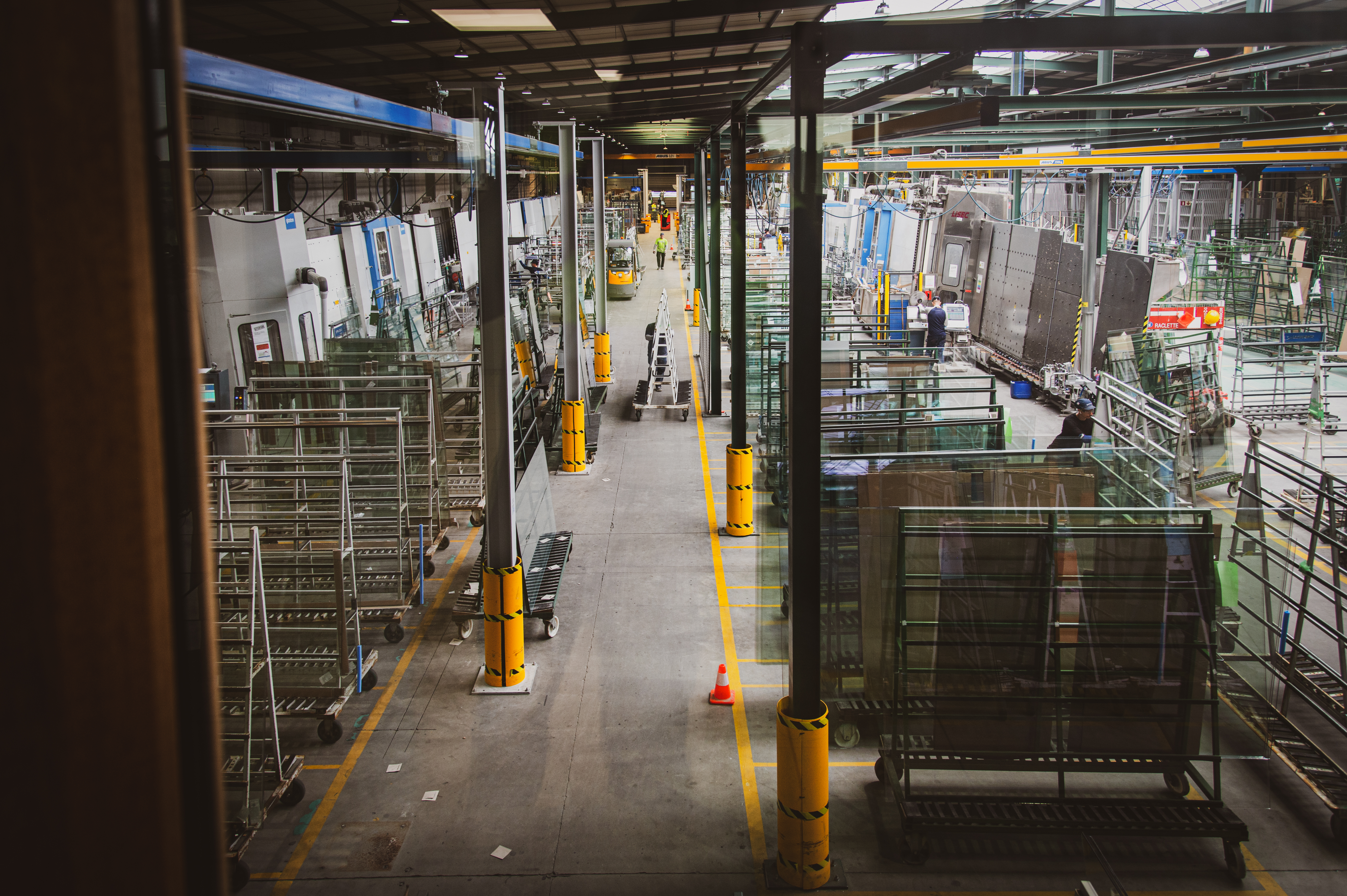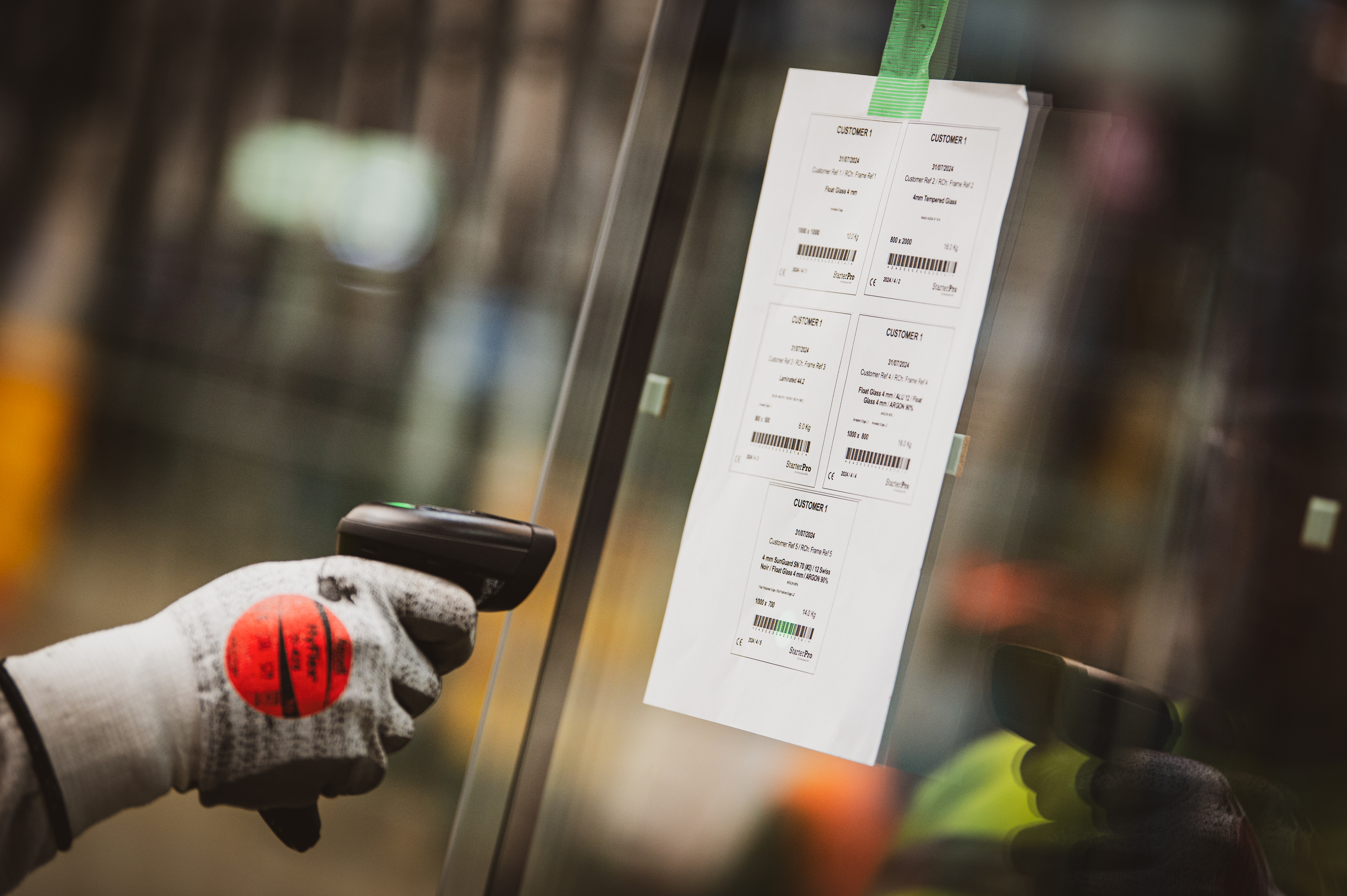Are you constantly dealing with production delays, defects, or inefficiencies in your glass processing business? Do you feel like no matter how much you plan, unexpected issues always arise? The reality is that production inefficiencies, defects, and delays can significantly impact operations, leading to increased costs and missed deadlines. If you’re dealing with these issues, you might be wondering why it’s happening and, more importantly, how to optimize your production process.
With deep expertise in both the glass processing industry and technology, we’ve worked with many glass processors to tackle these issues head-on. Our team of experts at Synerglass-Soft has firsthand experience with the complexities of production environments and how ERP software can help you optimize your processes.
In this article, we’ll dive into five key challenges glass processors face with production monitoring, and most importantly, how you can address them to improve efficiency, reduce waste, and deliver consistent product quality.
Understanding the importance of effective production monitoring
Before we dive into the challenges, let’s first clarify what we mean by production monitoring and why it’s a critical component in the glass processing industry.
What is production monitoring?
In simple terms, production monitoring involves tracking, analyzing, and optimizing every stage of the production process in real time. In glass processing, this includes everything from cutting to assembly, and final quality checks. It requires monitoring critical variables such as:
- Machine cycle times
- Glass cutting sequences
- Production bottlenecks
- Quality control metrics (thickness, defects, etc.)
- Production tracking
- …
Why it matters in glass processing?
Glass production is highly complex, requiring precision at every step. Even slight deviations in machine speed, temperature, or sequencing can lead to defects, high scrap rates, and delays. Effective production monitoring allows you to:
- Reduce inefficiencies by identifying bottlenecks early.
- Improve product quality by catching defects before they escalate.
- Optimize resource allocation for labor, materials, and machine workload.
However, implementing and maintaining production monitoring can be easier said than done. Below are five key challenges glass processors face in production monitoring – along with actionable solutions.
1. Solving visibility issues in glass production
In glass processing, production lines are intricate systems that often involve multiple stages, from cutting and shaping to assembly and quality control. However, production inefficiencies are often hidden from view. Without full visibility across the entire production process, it is nearly impossible to pinpoint inefficiencies or areas of waste.
The impact:
A lack of visibility can:
- Production delays caused by unknown bottlenecks,
- Increased material waste due to inefficient sequencing,
- Higher operational costs from undetected machine slowdowns.
How to overcome it:
Real-time production tracking is essential for full visibility. A glass ERP system, such as Symbiose, helps centralize production data and integrate planning with optimization software, improving overall visibility.
Optimizing production sequencing without a sorting center:
A sorting center typically functions as a large organizing system that holds glass in a specific order for assembly. However, many manufacturers don’t have a dedicated sorting center, but this doesn’t mean you can’t optimize production sequencing. Instead, production can still be optimized by focusing on efficient upfront cutting scheduling and sequencing from the start.
This means grouping pieces based on the most efficient production order, so that once the glass reaches the assembly or final shaping stages, it’s already organized for minimal handling. Production planning and optimization tools can help by creating optimal cutting schedules that anticipate how the glass will be handled later in the process.
Even without sorting centers, it’s possible to manage sequencing by using optimization software to plan the production line in advance. For instance, cutting schedules can create “cutting piles” (e.g., “Pile A”) that indicate the exact sequence for the next steps. Operators can then follow the planned order, ensuring smoother transitions and reducing the risk of wasted material and downtime. This kind of upfront optimization ensures that production continues efficiently, even in the absence of a dedicated sorting center.
Actionable step:
- Today: Start by identifying the top three KPIs that impact your production efficiency, such as machine cycle time or scrap rate.
- Next step: Evaluate whether your current system provides real-time tracking of these KPIs. If not, consider a demo of a tool that does it to understand how it can help.
- Ongoing action: Regularly review bottlenecks in your production workflow and adjust sequencing based on tracking data.
Example: Imagine you are preparing an order for a large construction project. The cutting works efficiently, but a bottleneck at assembly means sheets aren’t reaching the next stage in time. This misalignment leads to wasted materials and missed delivery deadlines. With real-time production tracking, operators can spot these delays early and adjust workflows to prevent slowdowns before they escalate.
While improving visibility across the production line is vital for pinpointing inefficiencies, the next step is ensuring that what you see translates into consistent, high-quality output. Let’s address the issue of maintaining consistent product quality.
2. Overcoming inconsistent product quality
Inconsistent product quality is an ongoing challenge in the glass processing industry, where even slight variations in raw materials, machine settings, or production conditions can result in in product defects, leading to rework and increased scrap rates.
The impact:
Poor product quality undermines customer trust and profitability. Defects like uneven thickness, bubbles, or cracks can result from minor inconsistencies during production, leading to:
- Increased scrap and material waste,
- Time-consuming rework processes,
- Customer dissatisfaction due to inconsistent product standards.
How to overcome it:
Structured quality control processes are critical to detect and correct deviations early. Using a tool like Symbiose, manufacturers can:
- Log production parameters manually to track machine settings and process conditions
- Identify recurring defects by reviewing historical production data
- Standardize quality procedures by documenting best practices and key control points
Why this matters for insulated glass (IG) production:
Insulated glass (IG) units require multiple steps, including cutting, spacer bending, sealing, and final assembly.
If an operator at the bending station sets the wrong dimensions, even by a few millimeters, the entire IG unit could be defective.
A production monitoring system helps manufacturers track process parameters, but final quality validation still requires operator control.
Actionable step:
- Today: Conduct a quick audit of your production line to identify the most common defects or inconsistencies.
- Next step: Begin tracking one critical variable (e.g., furnace temperature, cutting precision) manually or with your existing tools and set a benchmark for acceptable ranges.
- Ongoing action: Improve your quality process by enforcing regular checks at key production stages and using recorded data to refine best practices.
Example: A manufacturer producing IG units realized they had a recurring issue where spacers were cut slightly off-spec. By recording and review manual checks, and tracking spacer dimensions before sealing, they could significantly reduce defects and rework costs.
Once you’ve tackled the root causes of inconsistent quality, the next hurdle is ensuring your machinery and production processes run without costly interruptions. Let’s dive into the challenge of managing production downtime effectively.
3. Addressing production downtime
Glass processing machinery is highly specialized and, without regular maintenance, can break down unexpectedly.That can bring an entire production line to a halt, leading to missed deadlines and costly delays.
The impact:
Unplanned machine breakdowns are a significant expense. Without proper maintenance, glass processors face:
- Delays in customer orders,
- Escalating repair costs,
- And reduced machine lifespan due to poor maintenance.
How to overcome it:
Monitor production order progress to detect disruptions early. To reduce downtime, manufacturers should establish structured maintenance schedules and track work-in-progress data to identify potential issues before they escalate. Ensuring efficient production flow also prevents excessive strain on specific machines, reducing wear and unplanned halts.
Establish a structured preventive maintenance schedule, manually or with a tool .This allows you to create tasks, log repairs, and monitor machine performance to detect issues before they escalate. By tracking work-in-progress and scheduling maintenance, you can reduce unplanned downtime and ensure smoother production flow.
Actionable step:
- Today: Create a preventive maintenance plan for your most critical machines. Help yourself with a maintenance tool to log maintenance activities, track repairs, and set up a maintenance calendar.
- Next step: Use your tool’s task management features to create maintenance service notes, schedule regular interventions, and set up a calendar for ongoing machine checks. By tracking machine performance data, you can anticipate servicing needs and plan repairs proactively.
- Ongoing action: If unplanned downtime is a recurring issue, consider implementing a predictive maintenance tool alongside Symbiose for enhanced monitoring.
Example: A glass company relying on reactive maintenance often faced unexpected downtime on their tempering furnace. By switching to predictive maintenance with real-time tracking, they identified unusual temperature patterns early, allowing them to schedule repairs before a major failure occurred.
Minimizing downtime is a significant step toward smoother operations, but another crucial factor is addressing waste and reducing scrap rates, which directly affect your bottom line. Here’s how to tackle this challenge.
4. Reducing scrap rate and tackling waste
In the glass processing industry, raw materials are expensive, and inefficient use of these materials can lead to high scrap rates and waste. Excessive waste is not only environmentally unfriendly but also directly impacts your bottom line by inflating production costs.
The impact:
- Incorrect machine settings – A slight miscalibration in a cutting table can increase off-cuts and reduce material efficiency.
- Inefficient nesting and sequencing – Poorly optimized cutting layouts result in excessive material loss.
- Defects during production – Surface imperfections, improper thickness, or handling errors lead to glass being discarded.
How to overcome it:
Opti-driven cutting optimization:
An optimization tool generates cutting sequences to maximize material efficiency, providing operators with optimized cutting stacks (e.g., Stack A). Each glass sheet is strategically placed in cutting piles, and workers receive a visual guide (printed sheet) that tells them exactly how to load glass onto racks.
While optimization improves raw material usage, production monitoring tools like Symbiose help track material waste, identifying where and why scrap occurs – whether due to incorrect machine calibration, handling errors, or suboptimal cutting layouts. By combining scrap tracking with cutting optimization, manufacturers can continuously refine their processes to minimize losses.
Actionable step:
- Today: Review your scrap rate to identify which production stage generates the most waste.
- Next step: Implement a tracking system to monitor material usage and cutting efficiency.
- Ongoing action: Use optimization software to refine cutting patterns and improve resource efficiency while leveraging production monitoring tools to track scrap rates in real time and identify process inefficiencies.
Example: Imagine you are struggling with high scrap rates and discover that incorrect machine settings on your cutting table is wasting material. By integrating real-time tracking of cutting precision, you can adjust settings to reduce unnecessary waste.
Reducing waste and improving material efficiency is key, but to maintain a seamless production flow, resource allocation must also be optimized.
5. Avoiding bottlenecks in ressource allocation
In glass processing, effective allocation of resources such as materials, machinery, and tasks is essential for maintaining an optimal production flow. Poor allocation can lead to bottlenecks, underutilized equipment, and task imbalances, all of which contribute to inefficiency.
The impact:
Poor resource allocation creates bottlenecks and inefficiencies, such as:
- Underutilized equipment,
- Imbalanced workload across machines,
- And delays in production workflows.
How to overcome it:
Use production planning tools, like Symbiose‘s production planning module, to allocate resources efficiently. The system can assign specific tasks to machines, define maximum load per machine, and balance the allocation of materials. This ensures that each machine is optimally utilized, reducing bottlenecks and production delays.
Actionable step:
- Today: Identify areas where resources are frequently misallocated (e.g., underutilized machines or uneven material distribution).
- Next step: Use auto-planning to develop an optimized production schedule based on real-time data.
- Ongoing action: Implement software or an auto-planning tool to automate resource allocation across tasks, ensuring smooth workflow.
Example: If one machine is overloaded while another is underperforming, the system can help you redistribute resources in a way that maximizes efficiency. You can dynamically allocate materials and machine time based on current production needs. You can also monitor labor allocation, ensuring that skilled operators are assigned to critical areas of production where their expertise is needed most.
By addressing these challenges – visibility, quality, downtime, waste, and resource allocation – you can create a more efficient production process. Let’s look at how you can start taking action today.
Moving Forward with Confidence in Production Monitoring
We have covered key production monitoring challenges, from visibility gaps to inconsistent quality and resource allocation. Addressing these issues with real-time tracking, preventive maintenance, and optimized cutting practices is crucial to improving efficiency.
Remember, tackling these problems can reduce waste, improve product quality, minimize downtime, and optimize resource use – leading to a more cost-effective, streamlined production process.
Start by identifying your top three production pain points and explore tools like Symbiose that offer monitoring, planning and optimization tools. Want to see how these solutions work in practice? Request a demo today.




